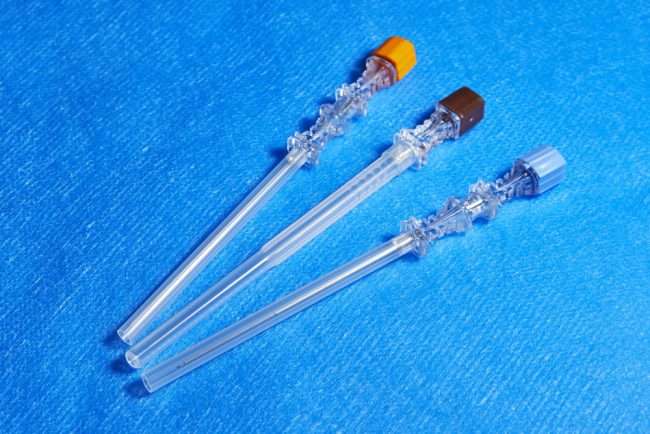Did you know that up to 36% of women who receive epidurals during childbirth may experience nerve damage as a side effect? This alarming statistic sheds light on a potential risk often overlooked in the birthing process. Understanding the signs of nerve damage from an epidural is crucial for early detection and intervention to prevent long-term complications.
In this post, we will explore common indicators of nerve damage post-epidural, empowering you with essential knowledge for informed decision-making and proactive healthcare management.
Understanding Epidurals
Procedure Basics
Epidurals involve injecting medication into the epidural space in the spine to provide pain relief. During childbirth, epidurals help manage labor pains effectively. The anesthesia commonly used in epidural injections is a combination of local anesthetics and opioids.
Common Uses
- Epidurals are commonly used for pain management during labor and delivery.
- They are also effective in managing chronic back pain and post-operative discomfort.
- In surgical procedures, epidurals offer precise pain control without affecting consciousness.
Potential Risks
Possible complications associated with epidurals include headaches, infections, and temporary nerve damage. Risk factors for nerve damage from epidurals include multiple needle insertions or improper placement. Informed consent is crucial as it ensures patients understand the potential risks before opting for an epidural procedure.
3 Early Signs of Nerve Damage
Understanding these 3 signs is crucial to identify potential issues early and seek appropriate medical care.
Sensory Changes
Nerve damage from an epidural can result in altered sensation, such as tingling or numbness in the affected areas. These sensory changes may extend to pain or hypersensitivity, indicating potential nerve impairment. The onset of these symptoms can vary post-epidural, often appearing gradually over time.
Such sensory alterations can significantly impact one’s daily life, affecting activities like walking, holding objects, or even feeling temperature changes properly. Patients may struggle with simple tasks due to reduced sensitivity or abnormal sensations caused by nerve damage.
Motor Skills Impact
Motor skills are commonly affected by nerve damage following an epidural. Weakness, muscle atrophy, or difficulty coordinating movements are telltale signs of impaired motor function. This decline in motor abilities can hinder a person’s ability to perform routine tasks efficiently.
Impaired motor skills post-epidural present challenges in maintaining balance and coordination, making activities like driving or writing challenging for individuals experiencing nerve damage-related issues.
Autonomic Dysfunction
Autonomic dysfunction, associated with nerve damage after an epidural, refers to the disruption of involuntary bodily functions controlled by the autonomic nervous system. Symptoms may include irregular heart rate, blood pressure fluctuations, or digestive problems post-procedure.
The implications of autonomic dysfunction on bodily functions are profound; patients may experience difficulties regulating basic physiological processes like heart rate variability and digestion after undergoing an epidural procedure.
Symptoms of Nerve Damage
Loss of Bladder Control
Neuropathic pain can manifest as loss of bladder control, a concerning symptom post-epidural. Patients may experience urinary incontinence, impacting daily life significantly. The inability to control urination can lead to embarrassment and affect overall well-being.
Pruritus, or itchy skin, is a common indicator of nerve damage following an epidural procedure. Itchy skin caused by nerve issues can be distressing for individuals. Understanding the link between epidurals and pruritus is crucial for timely intervention and management strategies.
Slow Breathing
Nerve damage from an epidural can result in respiratory complications such as slow breathing. Slow breathing post-epidural should be monitored closely as it indicates potential nerve-related issues affecting vital functions. Proper monitoring and prompt medical attention are essential in such cases.
Inadequate pain relief may occur due to nerve damage following an epidural placement. Managing pain becomes challenging when nerves are affected, necessitating alternative strategies for pain relief. Exploring various pain management options is crucial to ensure patient comfort and recovery.
Causes of Nerve Damage
Direct Injury
Direct nerve injury during epidural placement can occur due to needle trauma or improper positioning. Such injuries may result in immediate pain, weakness, or numbness. Long-term effects can include chronic pain and sensory disturbances.
Hematoma Formation
Hematoma formation is a rare but serious complication post-epidural. Factors like blood thinners or clotting disorders increase the risk. Symptoms of hematomas include back pain, leg weakness, and bladder dysfunction.
Infection Risks
Infections following epidurals are uncommon but can lead to severe complications if not treated promptly. Signs like fever, swelling at the injection site, or headache should not be ignored. Immediate medical attention is crucial to prevent further complications.
Blood Supply Issues
Nerve damage from epidurals can disrupt blood flow to nerves, leading to ischemia and tissue damage. Compromised blood circulation can result in nerve death and loss of function. Adequate blood supply is vital for maintaining nerve health.
Complications from Epidurals
Low Blood Pressure
Epidurals commonly cause hypotension, leading to decreased blood pressure levels during labor or surgery. This can affect nerve function by reducing blood flow to nerves, potentially causing damage. Management involves administering IV fluids and medications to stabilize blood pressure.
Feeling Sick
Nausea and vomiting are frequent post-epidural symptoms, often attributed to the effects of anesthesia on the body. Feeling sick after an epidural can result from changes in blood pressure and medication side effects. Strategies like adjusting medication doses or providing anti-nausea drugs help alleviate these symptoms.
Headache Occurrence
Headaches following an epidural may indicate nerve damage, especially if they persist beyond a few days post-procedure. Post-dural puncture headaches are characterized by throbbing pain that worsens when standing up. Differentiating between benign headaches and those signaling nerve injury is crucial for appropriate treatment.
Temporary vs Permanent Damage
Identifying Temporary Damage
Temporary nerve damage from epidurals typically presents as numbness or tingling sensations in the lower body. These symptoms can emerge within hours to days after the procedure. The timeline for identifying temporary nerve damage is crucial, often requiring close monitoring in the immediate post-epidural period. Patients may experience relief from temporary damage through physical therapy and other non-invasive treatments.
Recognizing Permanent Damage
Signs of permanent nerve damage following an epidural include persistent numbness, weakness, or even paralysis in the affected areas. Diagnosing permanent nerve injuries poses challenges due to overlapping symptoms with temporary damage and potential delays in manifestation. Long-term implications of permanent nerve damage can lead to chronic pain, impaired mobility, and decreased quality of life.
Preventing Nerve Damage
Early Detection
Detecting nerve damage early is crucial to prevent long-term complications. Diagnostic tests such as electromyography and nerve conduction studies help identify nerve injuries promptly. Early intervention through physical therapy or medication can halt further nerve damage progression.
Prompt Treatment
Timely treatment plays a vital role in managing nerve damage post-epidural. Healthcare providers may recommend pain management techniques or surgical interventions based on the severity of the injury. Prompt treatment not only alleviates symptoms but also reduces the risk of permanent nerve damage.
Monitoring Techniques
Healthcare professionals use various monitoring methods to evaluate nerve function after epidurals. Regular assessments, including sensory testing and reflex examinations, are essential for detecting any signs of nerve damage early on. Follow-up appointments are critical for continuous monitoring and ensuring optimal nerve health maintenance.
Final Remarks
In understanding epidurals, recognizing the early signs, symptoms, causes, and complications of nerve damage is crucial. Distinguishing between temporary and permanent damage can guide your actions in seeking preventive measures and appropriate treatment options. Remember, staying informed empowers you to make informed decisions about your health.
Take charge of your well-being by being vigilant about any potential nerve damage from epidurals. Prioritize preventive strategies and seek prompt medical attention if you notice any concerning symptoms. Your proactive approach can make a significant difference in safeguarding your nerve health. Stay informed, stay proactive, and prioritize your health above all else.



